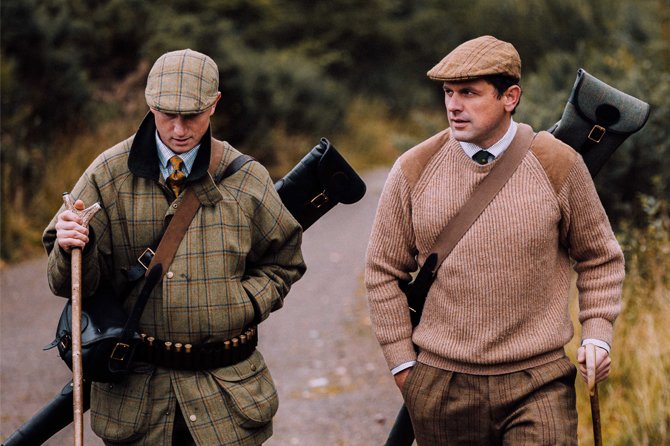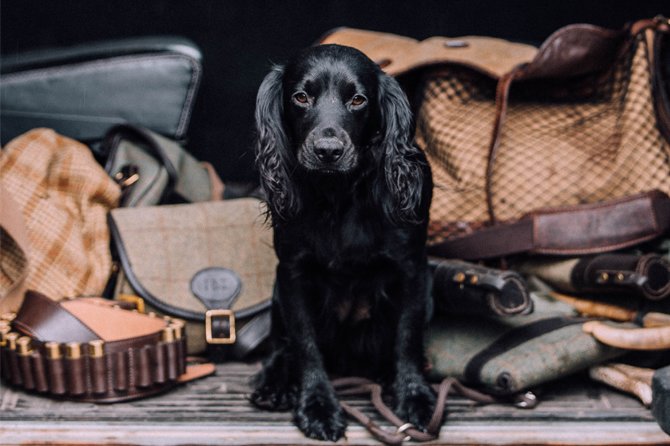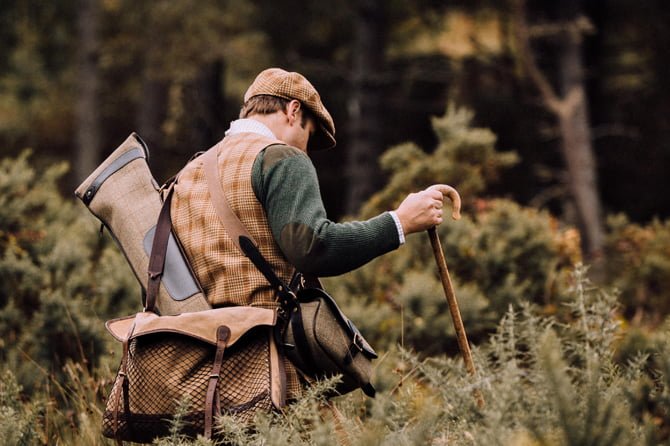Sporting Style
A guide through the different names of styles available
Our tailoring team is on hand to give advice and direction on the many variations to consider.
Common styles made by Campbell’s of Beauly
- Jackets – Shooting jacket, action back jacket, sports jacket, suit jacket, kilt jacket, smoking jacket
- Trousers – Plus fours, plus two’s, tartan trousers, trews
- Waistcoats – Evening waistcoats, kilt waistcoats, shooting waistcoats
- Hats – County caps, Deerstalker, Sherlock Holmes
Action back shooting jackets
Historically, there was a time when a tailored suit and tie was standard for all, from the boardroom to the factory floor. Back then tailors didn’t have the advantage of stretch fabrics, pure wool being the closest thing they had to a “performance fabric”. As a result they learned to engineer a comfortable range of freedom and motion into their jackets. The “action back” and it’s variations became popular for anyone who needed to move freely and quickly in their jackets, making it both perfect for the country gentleman shooting, as well as the hardy stalkers in the Glen’s of Scotland.
The Plus 2’s vs 4’s debate
Breeks, plus twos or plus fours? What’s the difference?
Breeks
Breeks are shorter and slimmer than plus 4’s or two’s. There is no “roll” below the knee, and they run straight into the sock. There will usually be a little crease allowing for additional room when sitting down. Breeks are favoured for driven shooting when standing on a peg, and due to not having a roll over, they allow for a shooting sock with a prominent cuff to be shown clearly.
Plus Twos
As per their description, plus 2’s have a 2 inch roll below the knee (this would measure four inches below the bottom of the knee when unfastened). They are essentially a half-way house between breeks and plus 4’s. Slightly baggier and longer than breeks, but shorter and skinnier than plus 4s. They are a good compromise between breeks and plus 2’s as they are suitable for both stalking as well as driven shooting.
Plus Fours
Traditional plus 4’s are baggy and have a four inch fold over the knee (this would measure eight inches below the bottom of the knee when unfastened). These are generally favoured by people that are purely stalking or requiring a lot of bending and leg movement. Because of the 4 inch roll over, the sock cuff is covered by the plus 4’s and cannot be seen.
Hats
Deerstalker
A deerstalker is a type of cap that is typically worn in the countryside, often for hunting, and in particular deer stalking. The deerstalker’s main features are a pair of bills or visors worn in front and rear. These are usually stiffened with pasteboard, cardboard or layers of heavy canvas. They provide protection for the face and neck of the wearer during extended periods out of doors.
Sherlock Holmes
This style is a very similar to the deerstalker, incorporating all the same characteristics, along with an additional pair of unstiffened cloth earflaps attached to either side of the cap. These are tied together by grosgrain ribbons or by laces or, very occasionally, held together by snaps or a button.. The earflaps, tied under the chin, provide protection in cold weather and high winds. They are otherwise tied together above the crown to keep them out of the way.
Flat cap
A flat cap is a rounded cap with a small stiff brim in front. There are many different names for this style of cap, for example, in Scotland it is often referred to as a bunnet, in Wales as a Dai cap, and in England and New Zealand, as a cheese-cutter. The style can be traced back to the 14th century in Northern England and parts of Southern Italy. In 1571 an Act of Parliament to stimulate UK domestic wool consumption and general trade decreed that on Sundays and holidays, all males over 6 years of age, except for the nobility and “persons of degree”, were to wear woollen caps on pain of a fine of three farthings (3/4 pence) per day.
The 8 piece cap
The 8 piece cap is a casual-wear cap similar in style to the flat cap. It is called the 8 piece because the formation of the top of the cap is made from 8 pieces of fabric. It has the same overall shape and stiff peak in front as a flat cap, but the body of the cap is rounder, fuller, and panelled with a button on top.
The style was popular in Europe and North America in the late 19th and early 20th centuries. Many photographs of the period show these caps worn by newspaper boys, dockworkers, steel workers, shipwrights, farmers and tradesmen of many types.




